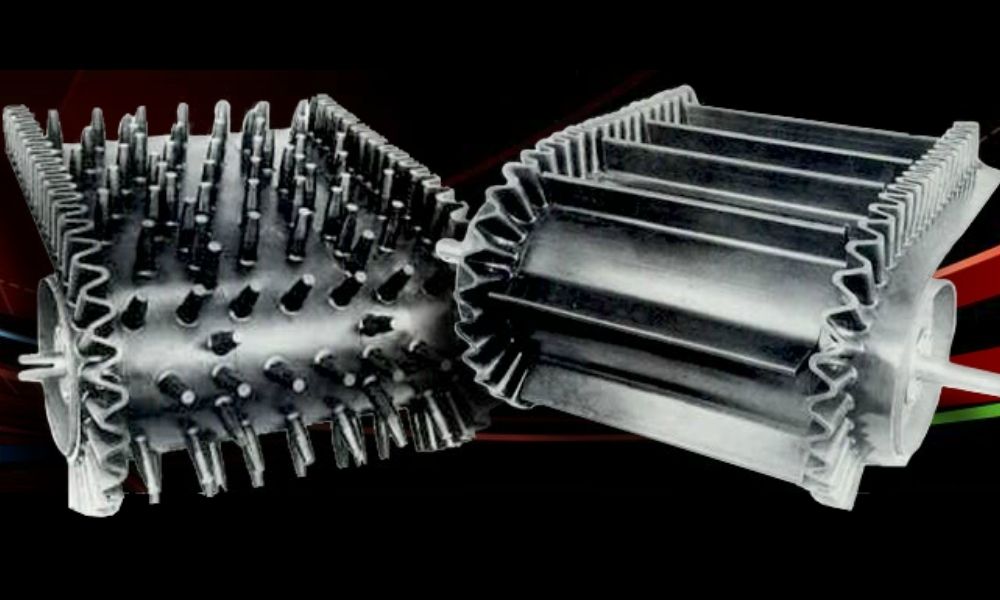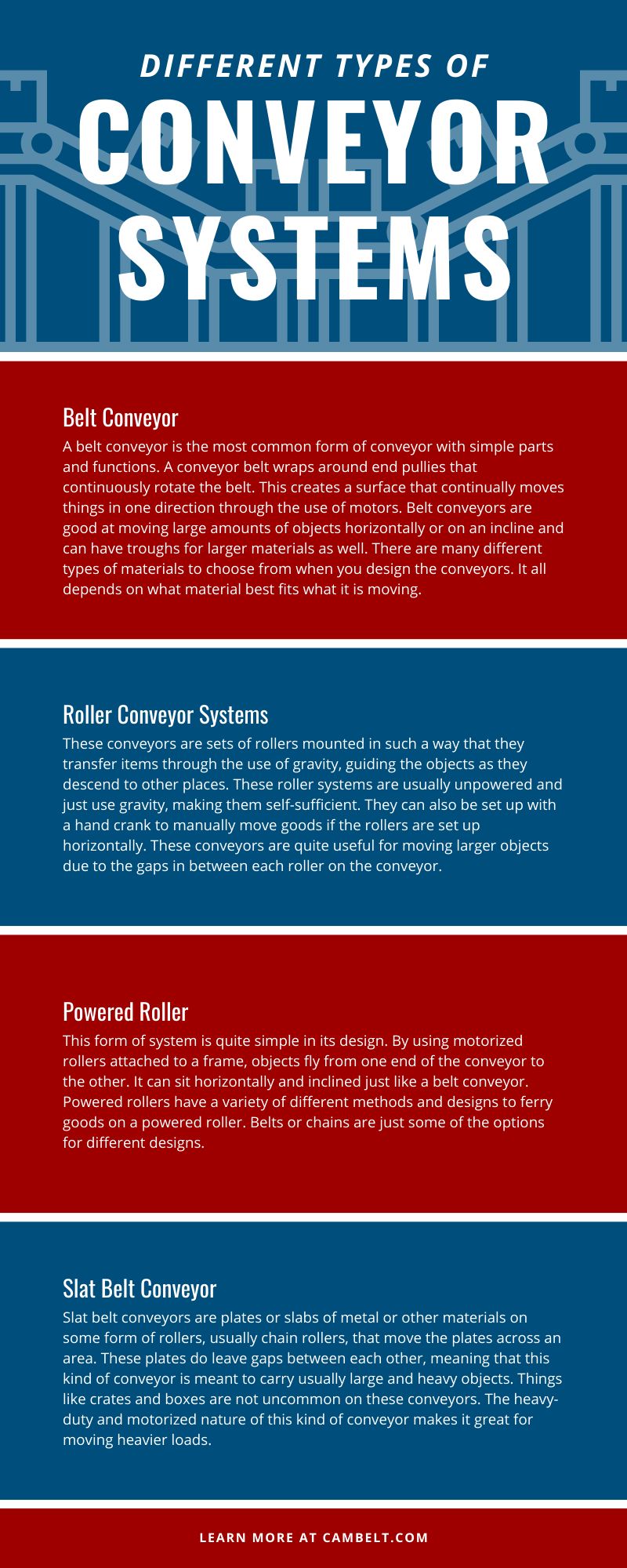
Conveyor systems feature in just about every form of manufacturing and production out there. It is hard to argue their usefulness and their boost to productivity. These manufacturing tools are extremely helpful in all sorts of different industries due to the different types of conveyor systems.
Belt Conveyor
A belt conveyor is the most common form of conveyor with simple parts and functions. A conveyor belt wraps around end pullies that continuously rotate the belt. This creates a surface that continually moves things in one direction through the use of motors. Belt conveyors are good at moving large amounts of objects horizontally or on an incline and can have troughs for larger materials as well. There are many different types of materials to choose from when you design the conveyors. It all depends on what material best fits what it is moving. As the most popular kind of conveyor, you will want to buy them from a good belt conveyor systems manufacturer, and we are proud to be a top manufacturer of belt conveyor systems.
Roller Conveyor Systems
These conveyors are sets of rollers mounted in such a way that they transfer items through the use of gravity, guiding the objects as they descend to other places. These roller systems are usually unpowered and just use gravity, making them self-sufficient. They can also be set up with a hand crank to manually move goods if the rollers are set up horizontally. These conveyors are quite useful for moving larger objects due to the gaps in between each roller on the conveyor.
Powered Roller
This form of system is quite simple in its design. By using motorized rollers attached to a frame, objects fly from one end of the conveyor to the other. It can sit horizontally and inclined just like a belt conveyor. Powered rollers have a variety of different methods and designs to ferry goods on a powered roller. Belts or chains are just some of the options for different designs, contact us today to see how we can manufacture a powered roller belt for you.
Slat Belt Conveyor
Slat belt conveyors are plates or slabs of metal or other materials on some form of rollers, usually chain rollers, that move the plates across an area. These plates do leave gaps between each other, meaning that this kind of conveyor is meant to carry usually large and heavy objects. Things like crates and boxes are not uncommon on these conveyors. The heavy-duty and motorized nature of this kind of conveyor makes it great for moving heavier loads.
Ball Transfer Conveyor
A ball transfer conveyor utilizes a series of mounted balls that allow for the movement of objects in multiple directions. It lacks a power feature and requires assistance to move the objects it carries. One of its more common uses is for sorting items as it can connect to several other systems and sort between these other systems easily. There is not too much variance in the design of a ball transfer conveyor, as the balls and the conveyor need unrestricted movement to function. It does have a variety of weight loads it can carry depending on your needs and specifications.
Bucket
Bucket conveyors are quite similar to what their name implies. Containers hang from cable, chains, or some form of moving system and transfer goods. The containers, referred to as buckets, are usually designed to hold liquids and fine materials like grain or sand. The containers are kept upright during the transfer to prevent spilling and eventually tip to drop their contents where needed. Bucket conveyors can have some problems with handling delicate materials without proper care, it’s worth it to be aware of the care that is necessary to keep bucket conveyor systems working optimally.
Chute
Chutes are effectively pathways for materials to slide along to different levels. They use gravity as their main way of transferring goods and keep their edges and sides smooth to allow for consistent movement of goods. Chutes are commonly used for scrap and other packages that don’t get damaged in falls. This is because the chute often drops the goods off at their final location.
Tow Conveyor
These conveyors take many different forms, but all share the fact that they link up to a moveable object and drag it (usually along wheels) to its destination. The conveyors link to objects through chains and cables and drag them along a mechanical pathway to their destination. These have a large variance in design, as they can feature open pathways or hide directly in the floors or walls.
Overhead Conveyor
Overhead conveyors mount to the ceiling and hold dangling contraptions that can hold whatever load it needs to carry. These are usually used to convey anything that needs to be hung when moving, for example drying clothes or paintings. Most overhead conveyors use motors and power to function. It is very important to keep in mind the conveyor’s load capacity since the contents that this conveyor carries are typically hanging.
Vacuum Conveyor
This kind of conveyor uses ducts or enclosed tubes and air pressure to move things around. Using suction, items transport through the ducts from an entry point to an exit quite rapidly. They can handle the transport of many types of materials and objects but struggle with delicate objects due to the nature of the movement. The ducts can be made from a number of materials that each affect the carrying compacity of the conveyor.
Screw and Auger Conveyor
The screw and auger conveyor systems move smaller materials but also have other functions that really make it desirable. Its main function is to blend small materials together to form a consistent blend and transport this new blend to another device. It does this by using a spinning shaft with a twisted blade like a screw to slowly mix and push the blended materials together and into a new device. The screw has a casing around it that helps to maximize the twisting nature of the device and keeps in the materials. Screw and auger conveyors are often used in food and grains processing, along with other powdered mixtures to blend together ingredients.
Now, these are quite a few of the different types of conveyor systems that find their homes in different industries. However, there are more kinds with specialized functions that may fit a need you need filled. Taking these conveyors and applying them to your business can greatly improve your productivity and keep your workers safe. If you wish to purchase quality conveyor systems that are tough in design and soft on materials, then you will want to look through our inventory at Cambelt International Co.

